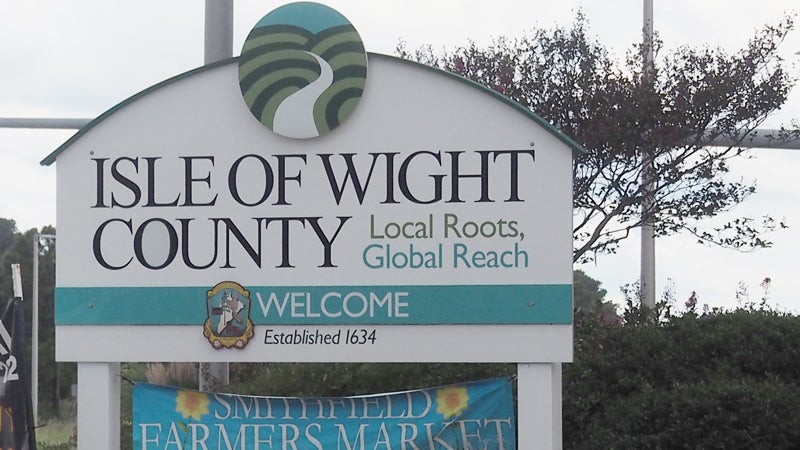Adding historical significance may be complicated
Published 1:50 am Wednesday, January 29, 2020
By Frederic Lee
Staff writer
Enhancing the historical significance of the town. Namely, Windsor Castle Park.
That reasoning appears to be behind the effort to find the remains of the Smithfield town founder, Arthur Smith IV — whom Smithfield Mayor Carter Williams believes is probably buried there.
Williams, who is credited with coming up with this possible Windsor Castle Park attraction, said it would be “pretty neat” to offer a marker pinpointing Smith’s final resting place, adding that the cost to find Smith’s remains is worth it and that it would be fascinating to visit a town and see the burial site of its founder there.
Those experienced with unearthing graves say identifying who is in a centuries-old unmarked grave is not easy, and deriving DNA even more difficult.
The town has earmarked $35,000 for this project, coming from money left over from restoring the park’s manor house, but there are some hurdles to overcome. {mprestriction ids=”1,2,3,4,5,6″}
First of all, archeologists have reported that there are likely more than 40 graves at Windsor Castle Park. Some are better marked than others.
Williams is pretty sure that one in particular belongs to Smith because it was built from slate.
To dig it up, the town needs a permit from the Virginia Department of Historic Resources and consent from living descendants.
It appears town officials know of some descendants but havn’t told them yet about the plans to dig up their ancestor’s remains. To make a match, the descendants would need to offer their own DNA too. The descendants apparently don’t know about that part, either.
It’s too early to discuss doing DNA tests right now, said Isle of Wight Museum Director Jennifer England.
“Our first concern is determining how far the cemetery extends,” said England, adding that after that, another round of ground-penetrating radar is likely in the works.
Smith founded the town of Smithfield in 1750 and died in 1755 at Bacon’s Castle in Surry where he lived with his wife, Elizabeth Bray Allen.
Years ago, descendants of Col. Joseph Bridger helped cover the cost of exhuming his remains, which are buried in a tomb under the floor at Historic St. Luke’s Church. The effort happened to coincide with an exhibit being created by the Smithsonian Museum titled, “Written in Bone: Life and Death in the Colonial Chesapeake,” said Bill Hodsden, president of the Historic St. Luke’s Board of Directors, as well as a member and treasurer of the Bridge Family Association.
In this case, the remains were documented as being from Bridger and the Smithsonian was interested in terms of learning more about the lives of early colonists. The project was are also recorded by The History Channel.
Before the remains were exhumed, however, permission was sought not only from the many descendants in the association, but also the church, said Hodsden.
“We felt it was appropriate to ask family members first,” said Hodsden about the exhumation.
The exhumation occurred more than 10 years ago and the DNA has yet to be matched with descendants, as sequencing is difficult using a small number of bones, said Hodsden, adding that just 20 percent of Bridger’s remains were in the tomb at St. Luke’s after they were moved there from his farm.
The scientific technique used is quite sophisticated and only a few places in the world can do it, said Hodsden, adding that the project has long moved behind his level of understanding.
The most ideal situation is to have teeth, as those retain DNA material better, he said, adding that Bridger’s teeth were not in the tomb, said Hodsden.
Bridger was one of the builders of St. Luke’s, as well as an Admiral of the Virginia fleet and a member of the House of Burgesses. He died in 1686.
Archaeologist Alain Outlaw, who has conducted digs at Windsor Castle Park, said that in order to identify the remains from that time period, good bone is necessary, but its also necessary to know who is buried there.
Usually when his team of archaeologists finds a grave, they do not know who is buried there, said Outlaw.
Obtaining information from the bone, including DNA, is a complicated process, he said.
Bones obtained from Jamestown, for example, have been sent to England for analysis, he said.
A permit to exhume a body would require a valid reason for doing so, as well as public notice and the expertise of an archaeologist and osteologist, said Outlaw.
“It’s a lengthy process,” adding that generally the reasons to exhume a grave are to further historical knowledge about how people lived in the colonial era.
Editor Diana McFarland contributed to this report. {/mprestriction}





